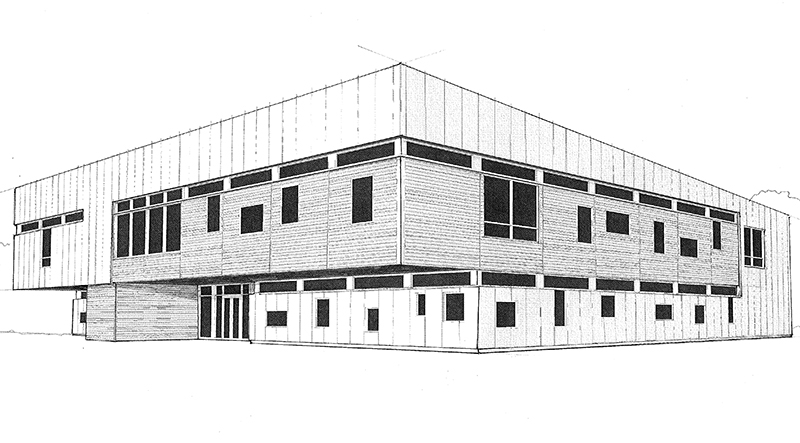Board of Trustees Approves Construction of Temporary Building

MIDDLEBURY, Vt. – At its meeting on Oct. 21, the Middlebury Board of Trustees approved construction of a temporary building to house the Computer Science Department and provide space for other academic and staff departments in the coming years. The new building, which must pass a state environmental-impact review and be approved by the town of Middlebury, will be built on the south side of the parking lot behind Johnson Memorial Building.
Executive Vice President for Finance and Administration David Provost said the building will open during the 2018–19 academic year.
Trustees approved a budget of $4.5 million for the two-story building, which will be approximately 24,000 square feet. It will have an expected life of 12 to 15 years. Provost said the building’s size and low cost of construction—about a third of the price per square foot of a permanent building on campus—make it an economical interim solution to the institution’s space needs.
In recent years, changes in the size of some departments, particularly the growing number of students majoring in science and technology disciplines, has created capacity issues in some areas. The project is not based on an assumption of growth in the student body or faculty overall.
The new building, as yet unnamed, will house the Computer Science Department, which will move from its current home in McCardell Bicentennial Hall. That move will create additional space for other departments already in BiHall.
The rest of the new building will, in the several years to follow, be used as “swing space” to accommodate faculty housed in Munroe and Warner while each of those buildings is renovated to upgrade mechanical, environmental, and safety systems and to meet current accessibility requirements that will make the building ADA compliant, a priority for the institution. Architectural studies on those two buildings will begin this fall.
“This project will create the capacity we urgently need to upgrade some of our older buildings so that they can meet today’s educational and accessibility needs,” said Provost. “After much consideration, I think we’ve arrived at a plan that serves Middlebury’s long-term and short-term needs.”
The College is working with McLeod Kredell Architects of Middlebury on the design of the Middlebury-owned temporary building.
In parallel with the temporary space plan, Middlebury also is taking steps to review its long-term needs for academic space. This fall, the College commissioned a comprehensive space utilization study designed to identify future needs and to identify ways to better utilize existing office, classroom, and meeting spaces. In all likelihood, this work will culminate in the design and construction of a major new academic building.
That future building, which would require significant planning and fundraising, would be located on the core campus in a yet-to-be identified location. It has not been decided what departments would occupy the building, which is not expected to be constructed for several years.

